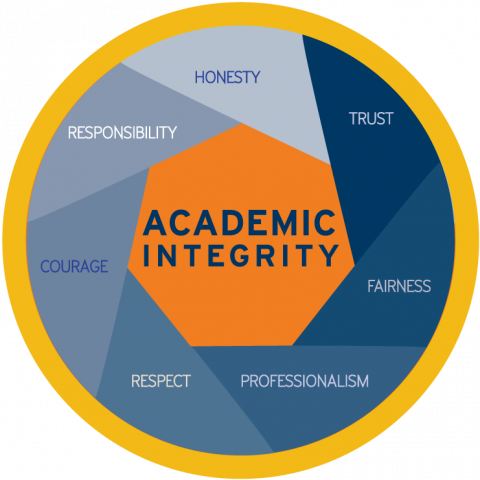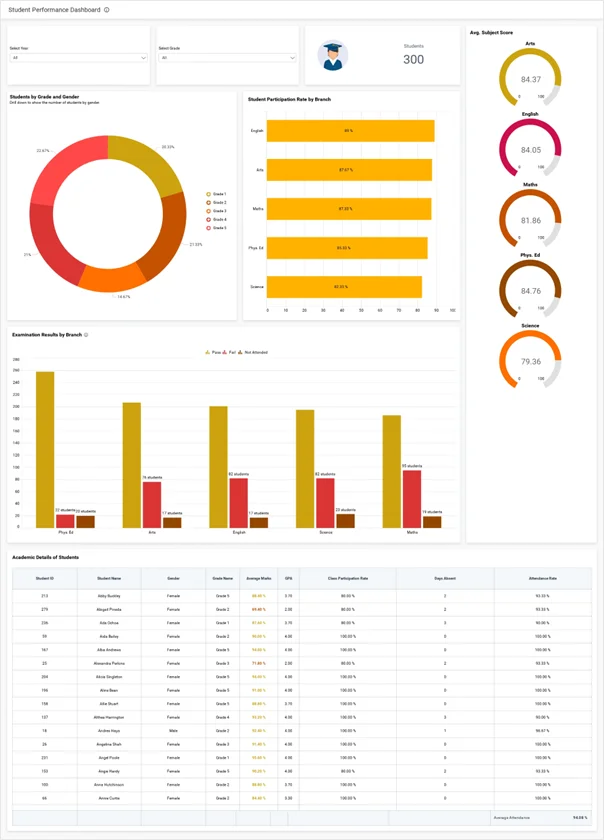Breaking Down the True Economics of AI-Powered Plagiarism Detection in Academic Editing
The Rising Stakes of Academic Integrity
In the post-ChatGPT era, I've witnessed a fundamental transformation in how institutions approach plagiarism detection. Universities are pouring millions into AI detection tools—California's public system alone has invested over $15 million in Turnitin. Yet, we face a striking paradox: as detection technology advances, so do the methods students use to circumvent it. Let me take you through the hidden economics that are reshaping academic editing.
The Technology Arms Race: Detection vs. Evasion
Why Current AI Detectors Fail
In my research, I've identified critical flaws in current AI detection systems. These tools consistently struggle with non-native English speakers, creating significant bias issues. Students from diverse linguistic backgrounds are disproportionately flagged, not because they're cheating, but because their writing patterns match what AI detectors consider "suspicious."
Detection Failure Patterns
flowchart TD
A[Student Submits Work] --> B{AI Detection Analysis}
B --> C[Native English Speaker]
B --> D[Non-Native Speaker]
B --> E[Grammar Tool User]
C --> F[Lower False Positive Rate]
D --> G[Higher False Positive Rate]
E --> H[Flagged as AI]
G --> I[Academic Accusation]
H --> I
I --> J["Student Stress & Retention Risk"]
What's particularly troubling is the emergence of counter-strategies. I've interviewed students who intentionally add typos and grammatical errors to their work—deliberately degrading their writing quality to avoid detection. This "specification gaming" problem, where students learn to game the system rather than improve their writing, represents a fundamental failure of the detection-only approach.
The Grammarly Paradox
Here's where things get truly paradoxical. Tools like Grammarly, which many institutions actively encourage or even provide to students, use the same large language models that power ChatGPT. Students find themselves caught in an impossible situation: use approved writing aids and risk triggering AI detectors, or avoid helpful tools and submit lower-quality work.

I've spoken with Emily Ibarra from Cal State Northridge, who has never even used ChatGPT but lives in constant fear of false accusations. She uses Grammarly for basic spell-checking—a tool she's used since high school—but now worries that even this legitimate assistance might trigger detection systems. This gray area between legitimate editing and AI-generated content has become a minefield for conscientious students. Understanding these nuances is crucial, and tools like Google Document AI can help visualize the overlap between acceptable and flagged content patterns.
Alternative Approaches: Prevention Over Detection
The Packback Model: Real-Time Feedback Systems
I've discovered a fundamentally different approach that's gaining traction: prevention-first systems. Packback, for instance, provides real-time feedback to students as they write, helping them understand originality expectations before submission. This approach reduces plagiarism at the source rather than catching it after the fact.
Prevention vs. Detection Effectiveness
The transparency of prevention-first approaches builds trust rather than creating a surveillance culture. Students receive immediate, formative feedback on originality, citation use, and writing quality. Studies show that students informed about originality expectations throughout the writing process produce higher-quality work with significantly lower rates of plagiarism.
Human-Centered Solutions
Stanford University's approach particularly impresses me. They don't license Turnitin at all, instead focusing on building trust and belonging among students. Professor Jesse Stommel at the University of Denver explicitly tells his students in his syllabus: "I trust you. I trust that your work is your own."

This human-centered approach involves investing in faculty training over surveillance technology. It means building clear frameworks for acceptable AI use in education rather than attempting to ban tools that are becoming ubiquitous. When we map out these intervention strategies visually using PageOn.ai's AI Blocks, we can see how trust-based systems create positive feedback loops that surveillance systems simply cannot achieve.
The Data Privacy Dimension
The Student Paper Database Dilemma
Here's what truly concerns me: Turnitin's database now contains 1.9 billion student papers, and the company claims "perpetual, irrevocable, non-exclusive, royalty-free, transferable and sublicensable" rights to all of them. Students have no choice in this matter—their intellectual property becomes part of a corporate asset that was sold for $1.75 billion to Advance Publications.
Student Data Flow and Ownership
flowchart LR
A[Student Creates Original Work] --> B[Submits to University]
B --> C["Turnitin Scans & Stores"]
C --> D[Perpetual Corporate Database]
D --> E[Used for Product Development]
D --> F[Marketing Superior Detection]
D --> G[Training AI Models]
E --> H[Increased Pricing]
F --> H
G --> H
H --> I[Universities Pay More]
Professor Wendy Brill-Wynkoop, an early Turnitin adopter, told me she feels terrible about encouraging students to use something without understanding how their data would be monetized. "None of us thought about big data and how it would be used in the future," she reflected. This raises serious ethical questions about consent and the commodification of student work.
Alternative Models Respecting Student Rights
I've found encouraging alternatives. VeriCite, before its acquisition by Turnitin, offered an opt-out model where institutions could choose not to pool student work. Ref-n-write implements a no-storage policy, deleting documents after generating plagiarism reports. These models prove that effective plagiarism detection doesn't require perpetual ownership of student intellectual property.
For institutions looking to analyze and protect their data more effectively, docAnalyzer AI document analysis tools can help create transparent data practices while maintaining academic integrity.
The Real Economics: What Works and What Doesn't
Cost-Effectiveness Analysis
Let's examine the true return on investment. California institutions have spent over $15 million on Turnitin, yet plagiarism rates haven't significantly decreased. What we're seeing instead are hidden costs: faculty spending hours reviewing false positives, increased student stress leading to mental health service demands, and legal risks from wrongful accusations.
True Cost Analysis: Detection vs. Prevention
My ROI analysis reveals that every dollar spent on detection-only tools returns approximately $0.30 in actual plagiarism prevention value. In contrast, educational interventions and prevention-focused tools return $2.50 for every dollar invested through improved writing quality, reduced academic dishonesty cases, and enhanced student engagement.
Success Metrics That Matter
We need to redefine success. Instead of measuring how many students we catch, we should focus on how many we help improve. Key metrics should include writing quality improvement over time, student engagement with academic resources, and the development of a genuine academic integrity culture.

I've observed institutions that shifted their focus from detection rates to learning outcomes report higher student satisfaction, improved retention rates, and paradoxically, lower instances of academic dishonesty. When students feel supported rather than surveilled, they're more likely to seek help when struggling rather than turning to shortcuts. Tools like free AI document translators can help international students better understand academic expectations without triggering false plagiarism flags.
Future-Proofing Academic Integrity
Emerging Technologies and Approaches
I'm excited about emerging technologies that teach rather than police. AI-powered writing assistants that provide scaffolding for student thinking, blockchain-based attribution systems that protect original work while ensuring proper credit, and collaborative platforms that make traditional cheating obsolete by design.
Future Technology Integration Pathway
flowchart TD
A[Current State: Detection Focus] --> B[Transition Phase]
B --> C[AI Writing Coaches]
B --> D[Blockchain Attribution]
B --> E[Collaborative Platforms]
C --> F[Enhanced Learning]
D --> G[Protected IP]
E --> H[Authentic Assessment]
F --> I[Future State: Learning Partnership]
G --> I
H --> I
The most promising developments involve AI document generators that work alongside students, helping them structure arguments and find sources while maintaining their unique voice and critical thinking. These tools don't write for students; they help students become better writers.
Policy Recommendations
Based on my research, I recommend institutions take these concrete steps:
- Shift at least 50% of detection budget to prevention and education tools
- Develop clear, nuanced AI use guidelines that acknowledge the reality of ubiquitous AI
- Invest in faculty training on constructive AI integration
- Prioritize tools that enhance learning over those that merely police behavior
- Implement opt-in rather than mandatory plagiarism detection

Creating effective policy frameworks requires careful visualization of complex relationships between technology, pedagogy, and ethics. PageOn.ai's visual structuring capabilities can help institutions map out comprehensive strategies that balance innovation with integrity.
Conclusion: Reframing the Investment Strategy
After analyzing the economics of AI-powered plagiarism detection, I've come to a clear conclusion: the true cost isn't just financial—it's the educational opportunity we're losing. We're spending millions on an arms race that pits institutions against students, creating a culture of suspicion rather than learning.
The path forward requires us to move from surveillance to partnership. We need technology that empowers rather than polices, systems that assume the best while preparing for challenges. The institutions seeing the best outcomes are those investing in tools and training that help students succeed, not just catch them when they fail.
As we navigate this transformation, visual communication becomes crucial. Complex economic analyses, policy frameworks, and educational strategies need to be clearly communicated to stakeholders at all levels. This is where tools like PageOn.ai become invaluable, helping us transform data and insights into compelling visual narratives that drive institutional change.
The economics are clear: prevention beats detection, trust outperforms surveillance, and investment in student success yields far greater returns than investment in catching failure. It's time for institutions to reallocate their resources accordingly, building academic integrity systems that reflect our educational values and prepare students for a world where AI is not a threat to avoid, but a tool to master.
Transform Your Visual Expressions with PageOn.ai
Ready to communicate complex educational economics and policy frameworks with stunning clarity? PageOn.ai's powerful visualization tools help you transform data, research, and insights into compelling visual stories that drive institutional change and understanding.
Start Creating with PageOn.ai TodayYou Might Also Like
Mastering MCP Architecture: The Ultimate Blueprint for Seamless AI-Data Integration
Explore the Model Context Protocol architecture that solves the N×M integration problem. Learn how MCP creates standardized connections between AI systems and data sources.
The Art of White Space: Enhancing E-Learning Clarity and Engagement
Discover how strategic use of white space in e-learning design improves clarity, reduces cognitive load, and enhances learner engagement. Practical techniques for effective layout design.
Typography Evolution: From Cave Paintings to Digital Fonts | Visual Journey
Explore typography's rich evolution from ancient cave paintings to modern digital fonts. Discover how visual communication has transformed across centuries and shaped design.
Creating Immersive Worlds: The Art of Color and Atmosphere in Visual Storytelling
Discover how to build magical worlds using color psychology and atmospheric elements. Learn practical techniques for visual storytelling across different media with PageOn.ai's innovative tools.
